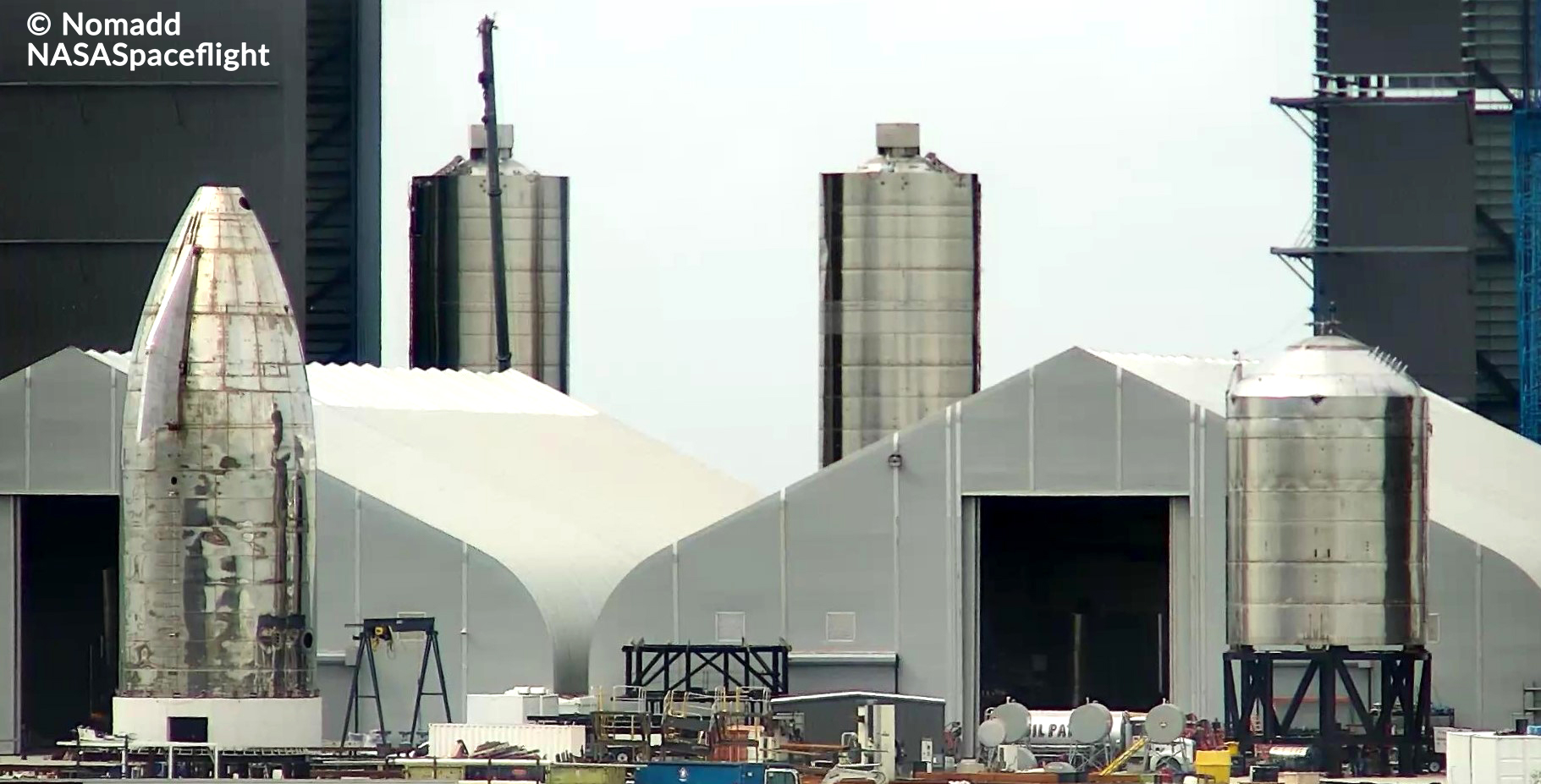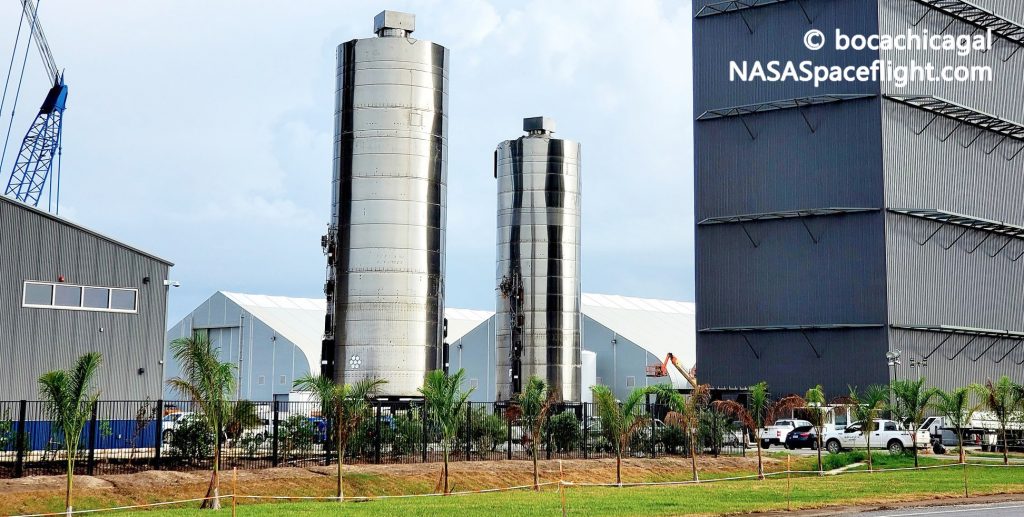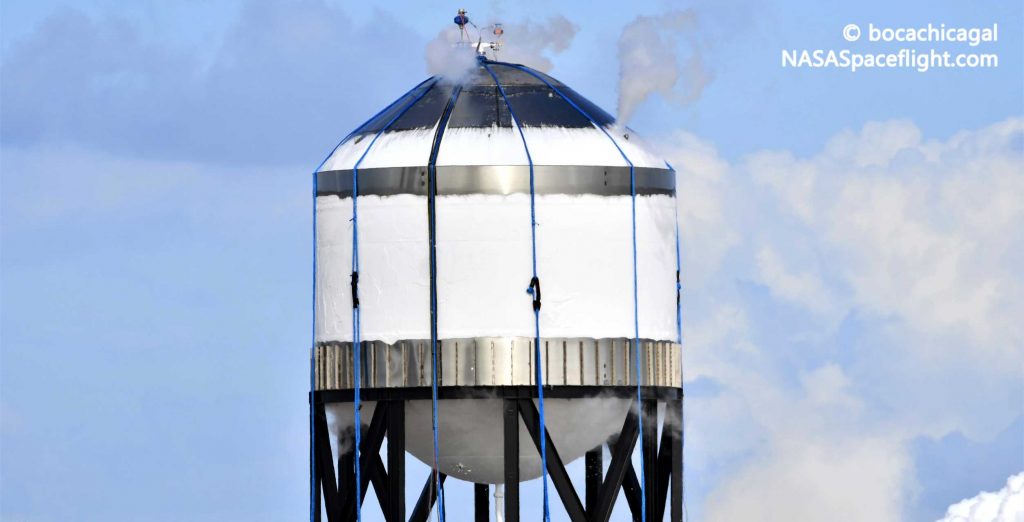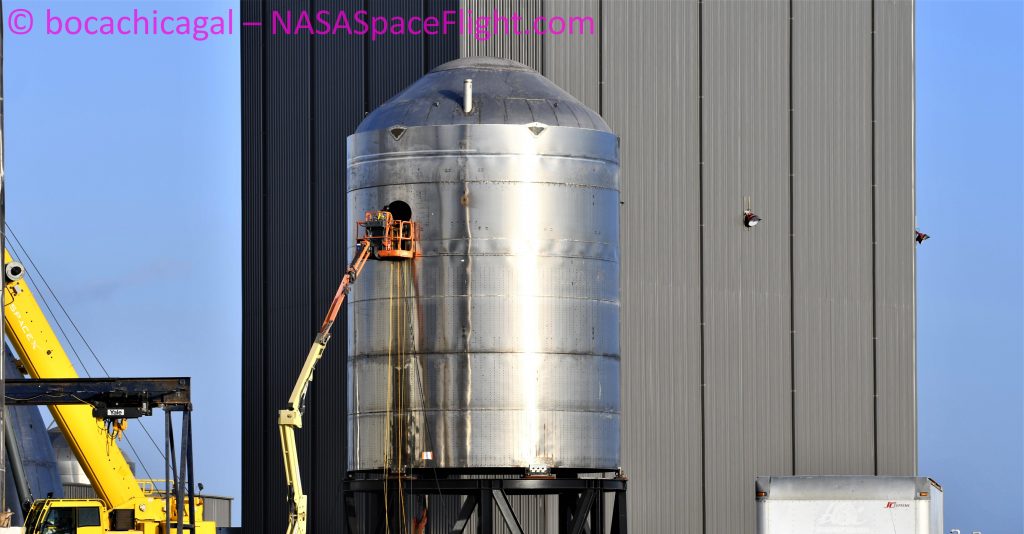

News
SpaceX’s second flight-proven Starship makes way for next ‘test tank’
Four days after the rocket’s hop debut, SpaceX has safely returned its second flight-proven Starship prototype to an assembly building for refurbishment, making way for a new ‘test tank’ at the launch pad.
Known as Starship serial number six (SN6), the ~30m (~100 ft) tall prototype became the second full-scale Starship to take flight on September 3rd, following in SN5’s footsteps to reach a similar ~150m (~500 ft) apogee before gently landing. More or less identical to SN5’s own August 4th hop debut, it marked the second hop of an entirely separate Starship prototype in 30 days – a feat almost certainly unprecedented in the history of large-scale rocket development.
Significant work remains to speed up the post-hop process, which appears to currently amount to some ~48 hours of gradual, uncontrolled detanking and depressurization. Regardless, a bit least than four days after a successful launch and landing, Starship SN6 was rolled back to SpaceX’s Boca Chica, Texas production facilities around 9am CDT, September 7th. Just five hours after that, Starship test tank SN7.1 – the second in a planned series of two – was loaded onto the same transporter and shipped down the road to the launch pad.

Since its first hop, over the last 30 days, SpaceX has inspected and refurbished Starship SN5 to help support what CEO Elon Musk has described as “several short hops to smooth out [the] launch process.” SN6’s success (and the intact launch infrastructure it thus left behind) now means that SN5 will almost certainly be reused in the near future. It’s unclear how many hops will be needed for Starship launch operations to be optimized into a smooth process but 4+ (2 x SN5, 2 x SN6) seems to be a safe bet.
However, SN5’s second hop will have to wait. Up next on SpaceX’s South Texas manifest is the fifth in a series of intentionally destructive tank tests, used to qualify (or disqualify) new Starship designs, manufacturing techniques, and materials. Known as Starship SN7.1, this particular test tank is the second in a series of two meant to determine the capabilities of a new steel alloy.
The first tank, SN7, was (successfully) tested to destruction on June 23rd and is believed to have reached record pressures before it failed. Perhaps more importantly, an unintentional leak during one of SN7’s first pressure test attempts proved that the new 304L (-ish) steel alloy it was built out of would make certain failure modes far less catastrophic (i.e. a leak instead of a violent rupture).


SN7 was a single basic test tank: an upper dome, lower dome, and three steel rings. SN7.1 is significantly more complex, adding a skirt section with hold-down clamps at the base and replacing the aft tank dome with a thrust dome and thrust puck (Raptor engine attachment points). SN7 was simply loaded with cryogenic liquid nitrogen and pressurized. SN7.1 – thanks to the addition of a thrust puck and skirt section – will perform similar cryo pressure tests but will also be subject to the simulated thrust of three Raptor engines with a series of hydraulic rams.
As of now, SpaceX has road closures scheduled today and tomorrow (Sept 8th) from 8am to 8pm CDT – tomorrow likely being the earliest opportunity for SN7.1 testing to begin.
Check out Teslarati’s Marketplace! We offer Tesla accessories, including for the Tesla Cybertruck and Tesla Model 3.

News
Tesla is not sparing any expense in ensuring the Cybercab is safe
Images shared by the longtime watcher showed 16 Cybercab prototypes parked near Giga Texas’ dedicated crash test facility.

The Tesla Cybercab could very well be the safest taxi on the road when it is released and deployed for public use. This was, at least, hinted at by the intensive safety tests that Tesla seems to be putting the autonomous two-seater through at its Giga Texas crash test facility.
Intensive crash tests
As per recent images from longtime Giga Texas watcher and drone operator Joe Tegtmeyer, Tesla seems to be very busy crash testing Cybercab units. Images shared by the longtime watcher showed 16 Cybercab prototypes parked near Giga Texas’ dedicated crash test facility just before the holidays.
Tegtmeyer’s aerial photos showed the prototypes clustered outside the factory’s testing building. Some uncovered Cybercabs showed notable damage and one even had its airbags engaged. With Cybercab production expected to start in about 130 days, it appears that Tesla is very busy ensuring that its autonomous two-seater ends up becoming the safest taxi on public roads.
Prioritizing safety
With no human driver controls, the Cybercab demands exceptional active and passive safety systems to protect occupants in any scenario. Considering Tesla’s reputation, it is then understandable that the company seems to be sparing no expense in ensuring that the Cybercab is as safe as possible.
Tesla’s focus on safety was recently highlighted when the Cybertruck achieved a Top Safety Pick+ rating from the Insurance Institute for Highway Safety (IIHS). This was a notable victory for the Cybertruck as critics have long claimed that the vehicle will be one of, if not the, most unsafe truck on the road due to its appearance. The vehicle’s Top Safety Pick+ rating, if any, simply proved that Tesla never neglects to make its cars as safe as possible, and that definitely includes the Cybercab.
Elon Musk
Tesla’s Elon Musk gives timeframe for FSD’s release in UAE
Provided that Musk’s timeframe proves accurate, FSD would be able to start saturating the Middle East, starting with the UAE, next year.

Tesla CEO Elon Musk stated on Monday that Full Self-Driving (Supervised) could launch in the United Arab Emirates (UAE) as soon as January 2026.
Provided that Musk’s timeframe proves accurate, FSD would be able to start saturating the Middle East, starting with the UAE, next year.
Musk’s estimate
In a post on X, UAE-based political analyst Ahmed Sharif Al Amiri asked Musk when FSD would arrive in the country, quoting an earlier post where the CEO encouraged users to try out FSD for themselves. Musk responded directly to the analyst’s inquiry.
“Hopefully, next month,” Musk wrote. The exchange attracted a lot of attention, with numerous X users sharing their excitement at the idea of FSD being brought to a new country. FSD (Supervised), after all, would likely allow hands-off highway driving, urban navigation, and parking under driver oversight in traffic-heavy cities such as Dubai and Abu Dhabi.
Musk’s comments about FSD’s arrival in the UAE were posted following his visit to the Middle Eastern country. Over the weekend, images were shared online of Musk meeting with UAE Defense Minister, Deputy Prime Minister, and Dubai Crown Prince HH Sheikh Hamdan bin Mohammed. Musk also posted a supportive message about the country, posting “UAE rocks!” on X.
FSD recognition
FSD has been getting quite a lot of support from foreign media outlets. FSD (Supervised) earned high marks from Germany’s largest car magazine, Auto Bild, during a test in Berlin’s challenging urban environment. The demonstration highlighted the system’s ability to handle dense traffic, construction sites, pedestrian crossings, and narrow streets with smooth, confident decision-making.
Journalist Robin Hornig was particularly struck by FSD’s superior perception and tireless attention, stating: “Tesla FSD Supervised sees more than I do. It doesn’t get distracted and never gets tired. I like to think I’m a good driver, but I can’t match this system’s all-around vision. It’s at its best when both work together: my experience and the Tesla’s constant attention.” Only one intervention was needed when the system misread a route, showcasing its maturity while relying on vision-only sensors and over-the-air learning.
News
Tesla quietly flexes FSD’s reliability amid Waymo blackout in San Francisco
“Tesla Robotaxis were unaffected by the SF power outage,” Musk wrote in his post.

Tesla highlighted its Full Self-Driving (Supervised) system’s robustness this week by sharing dashcam footage of a vehicle in FSD navigating pitch-black San Francisco streets during the city’s widespread power outage.
While Waymo’s robotaxis stalled and caused traffic jams, Tesla’s vision-only approach kept operating seamlessly without remote intervention. Elon Musk amplified the clip, highlighting the contrast between the two systems.
Tesla FSD handles total darkness
The @Tesla_AI account posted a video from a Model Y operating on FSD during San Francisco’s blackout. As could be seen in the video, streetlights, traffic signals, and surrounding illumination were completely out, but the vehicle drove confidently and cautiously, just like a proficient human driver.
Musk reposted the clip, adding context to reports of Waymo vehicles struggling in the same conditions. “Tesla Robotaxis were unaffected by the SF power outage,” Musk wrote in his post.
Musk and the Tesla AI team’s posts highlight the idea that FSD operates a lot like any experienced human driver. Since the system does not rely on a variety of sensors and a complicated symphony of factors, vehicles could technically navigate challenging circumstances as they emerge. This definitely seemed to be the case in San Francisco.
Waymo’s blackout struggles
Waymo faced scrutiny after multiple self-driving Jaguar I-PACE taxis stopped functioning during the blackout, blocking lanes, causing traffic jams, and requiring manual retrieval. Videos shared during the power outage showed fleets of Waymo vehicles just stopping in the middle of the road, seemingly confused about what to do when the lights go out.
In a comment, Waymo stated that its vehicles treat nonfunctional signals as four-way stops, but “the sheer scale of the outage led to instances where vehicles remained stationary longer than usual to confirm the state of the affected intersections. This contributed to traffic friction during the height of the congestion.”
A company spokesperson also shared some thoughts about the incidents. “Yesterday’s power outage was a widespread event that caused gridlock across San Francisco, with non-functioning traffic signals and transit disruptions. While the failure of the utility infrastructure was significant, we are committed to ensuring our technology adjusts to traffic flow during such events,” the Waymo spokesperson stated, adding that it is “focused on rapidly integrating the lessons learned from this event, and are committed to earning and maintaining the trust of the communities we serve every day.”








